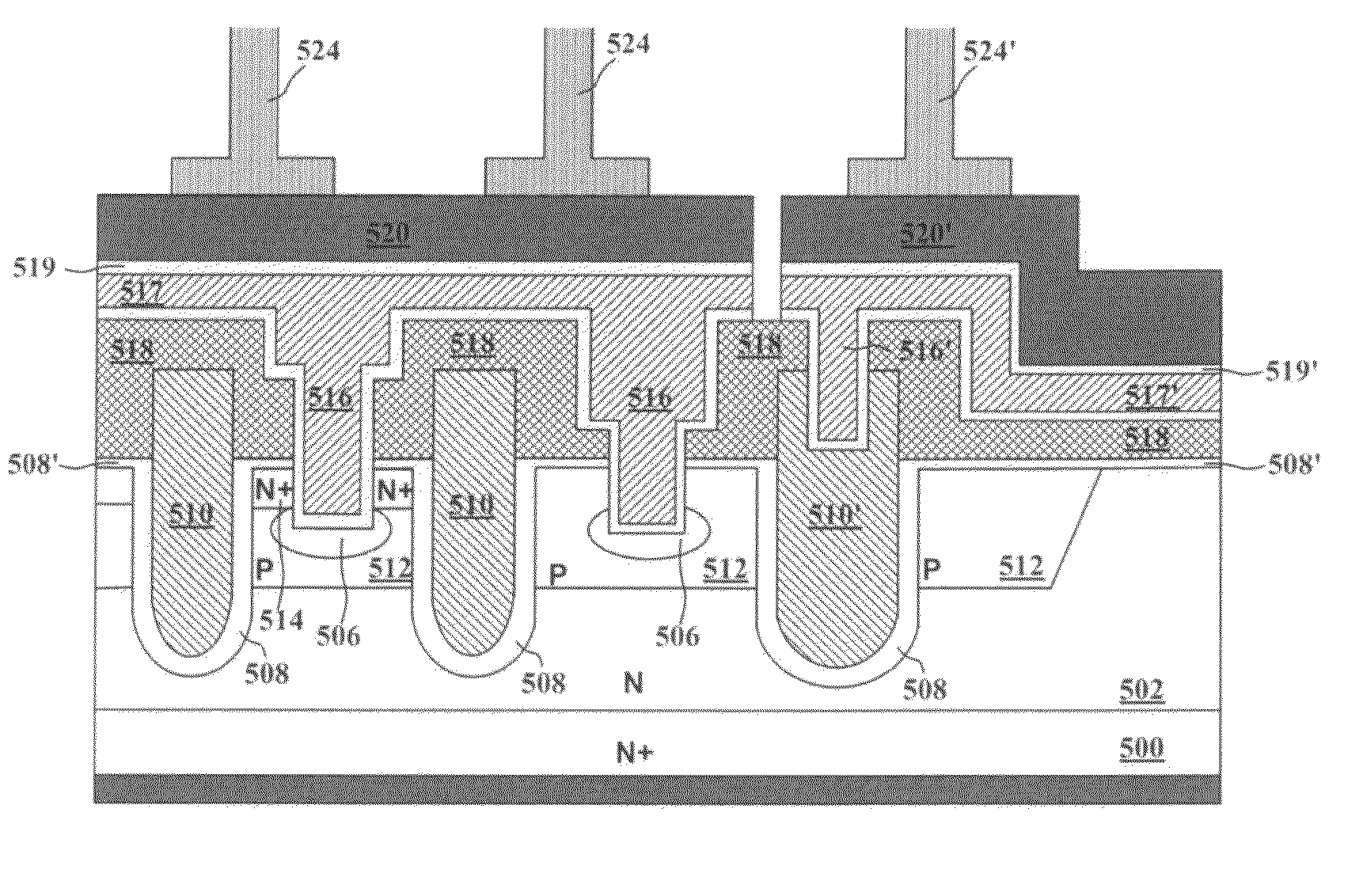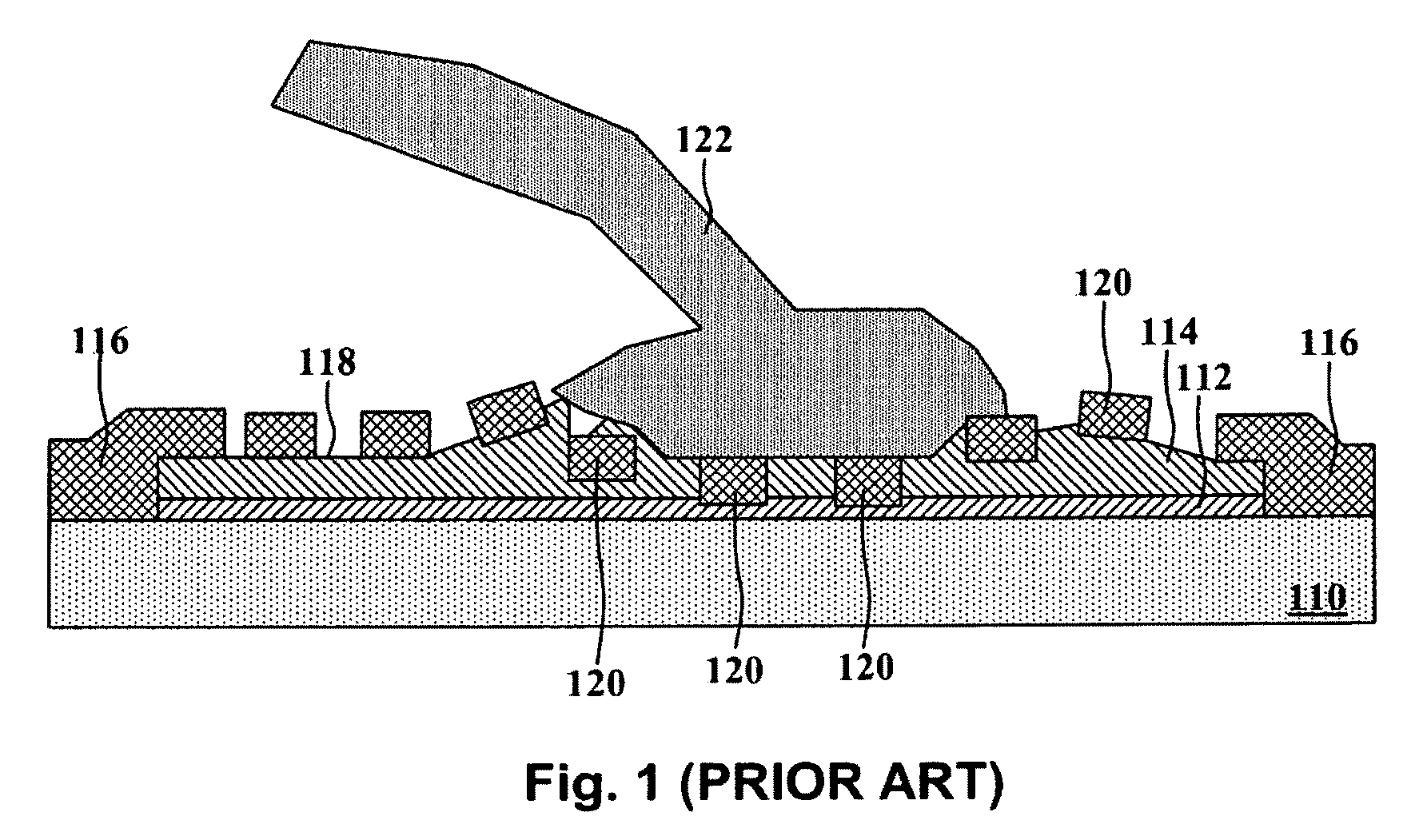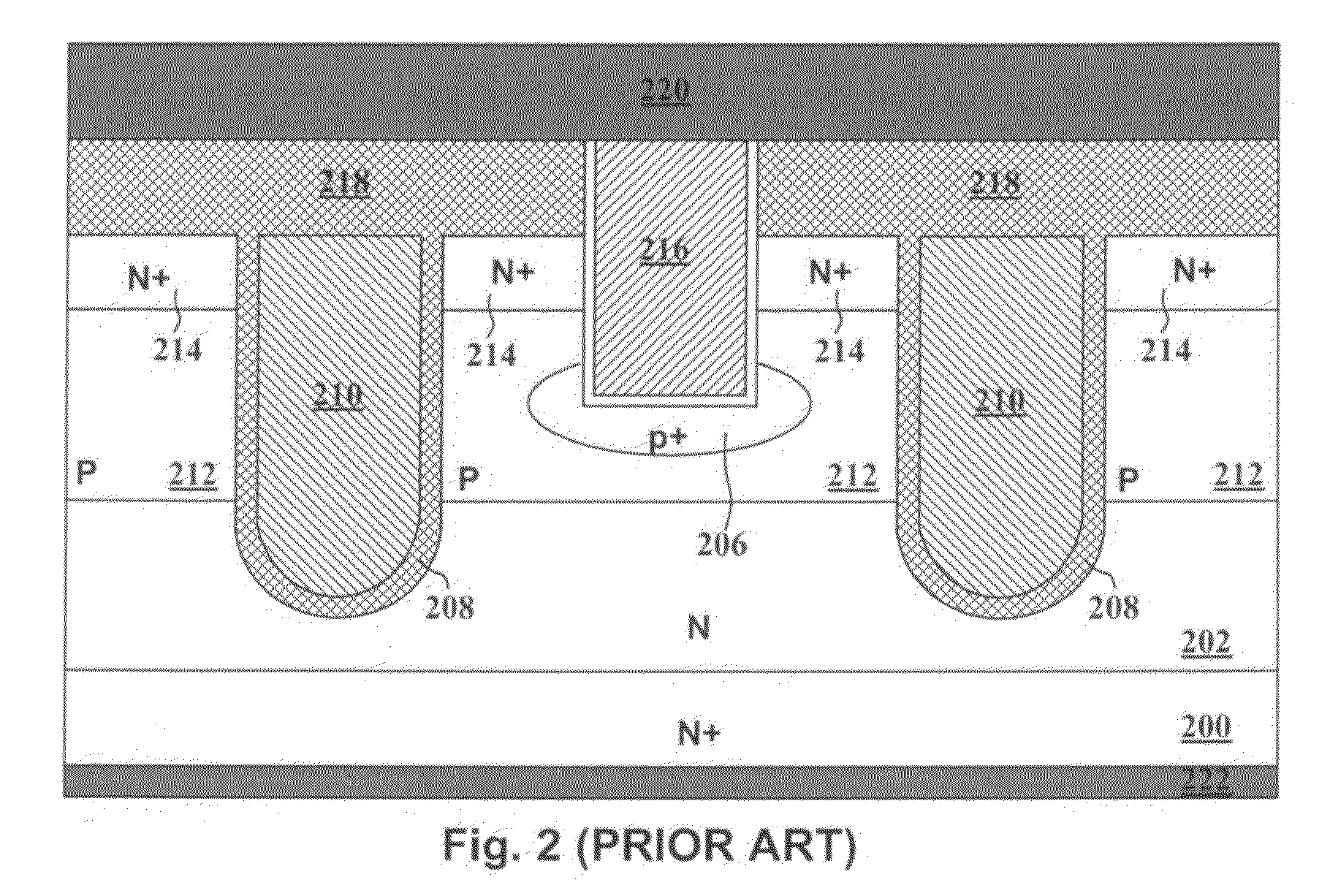Metal schemes of trench MOSFET for copper bonding
a copper bonding and trench mosfet technology, applied in semiconductor devices, semiconductor/solid-state device details, electrical devices, etc., can solve the problems of increased cost, increased cost, and introduction of bad wire bonding adhesion issues, so as to reduce the damage of cu wire bonding to semiconductor devices and reduce the cost
- Summary
- Abstract
- Description
- Claims
- Application Information
AI Technical Summary
Benefits of technology
Problems solved by technology
Method used
Image
Examples
Embodiment Construction
[0032]Please refer to FIG. 5 for a preferred embodiment of the present invention. The shown trench MOSFET cell is formed on an N+ substrate 400 coated with back metal Ti / Ni / Ag 422 on rear side as drain. Onto said substrate 400, grown an N epitaxial layer 402, and a plurality of trenches were etched wherein. To fill these trenches, doped poly was deposited into trenches above gate oxide layer 408 to form trench gates 410. P-body regions 412 are extending between trenches gates 410 with a layer of source regions 414 above the top surface of P-body regions 412. Source-body contact trench is etched through an oxide interlayer 418, a thin oxide layer 408′ and N+ source region 414, and into P-body region 412. Especially, the sidewalls of source-body contact trench are perpendicular to the front surface of epitaxial layer. To fill source-body contact trench, Ti / TiN / W or Co / TiN / W is deposited not only within contact trench as metal plug 416 but also cover the surface of oxide interlayer 418...
PUM
| Property | Measurement | Unit |
|---|---|---|
| angle | aaaaa | aaaaa |
| angle | aaaaa | aaaaa |
| taper angle | aaaaa | aaaaa |
Abstract
Description
Claims
Application Information
 Login to View More
Login to View More - R&D
- Intellectual Property
- Life Sciences
- Materials
- Tech Scout
- Unparalleled Data Quality
- Higher Quality Content
- 60% Fewer Hallucinations
Browse by: Latest US Patents, China's latest patents, Technical Efficacy Thesaurus, Application Domain, Technology Topic, Popular Technical Reports.
© 2025 PatSnap. All rights reserved.Legal|Privacy policy|Modern Slavery Act Transparency Statement|Sitemap|About US| Contact US: help@patsnap.com



